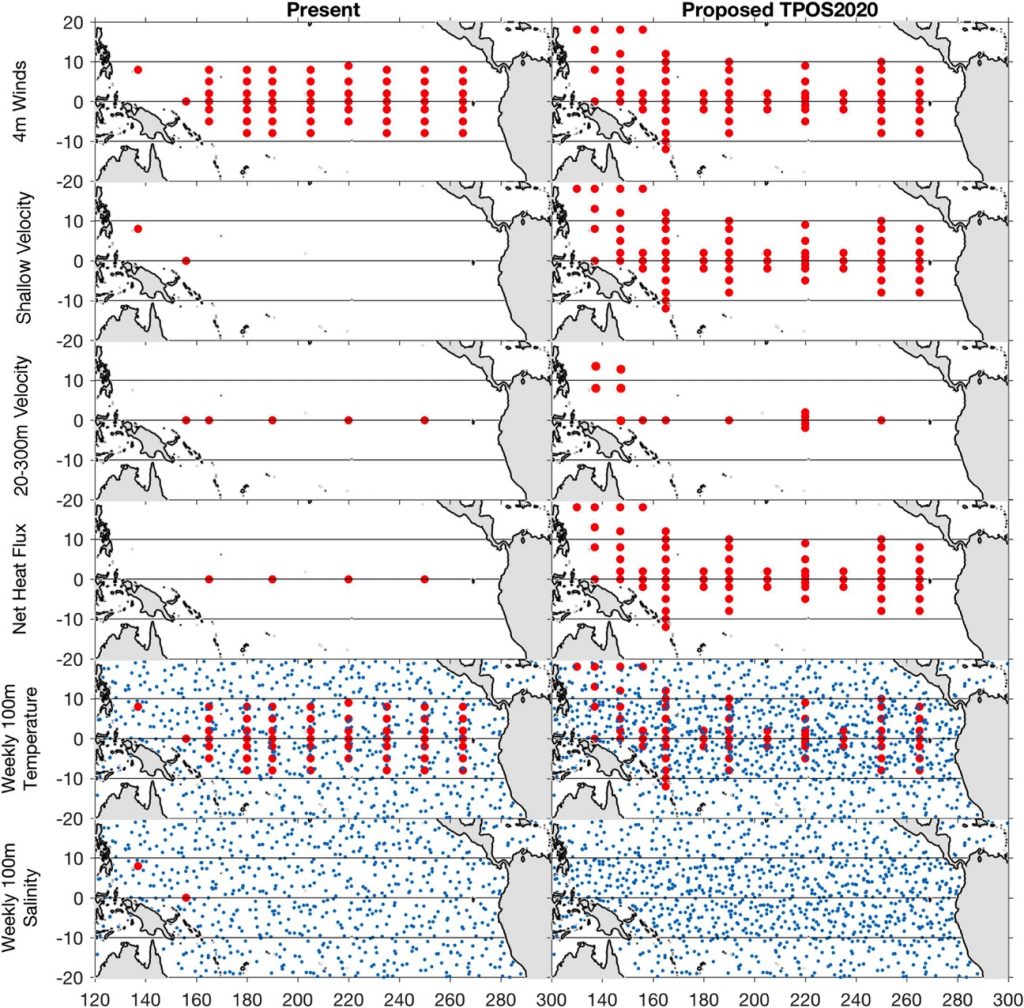El Niño and La Niña events, collectively referred to as ENSO, occurring in the tropical Pacific ocean-atmosphere system trigger changes in the atmosphere and ocean circulation that can affect remote regions around the world. Different regions experience droughts, floods, terrestrial and marine heatwaves and devastating tropical cyclones with major impacts on ecosystems. The impacts on agriculture, fisheries, lives and property amount to billions of dollars.
Our understanding of, and ability to predict ENSO events has improved since the 1980s, due to the establishment of a tropical Pacific observing system and improvements in numerical forecast models. Now after almost 40 years, a review and redesign of the observing system is necessary, because of improvements in technology and new operational and observational challenges.
This paper presents a framework for a redesign of the Tropical Pacific Observing System.

Among other functions, the observing system must include:
- Improved sampling of the upper ocean and air-sea interactions,
- sampling of variability at daily and shorter time scales,
- sampling of fine spatial scales and
- satisfying emerging demands related to biogeochemistry and ecosystems.
The paper discusses the status and outlook for meeting the requirements of the design. This is accomplished through complementary platforms, including satellites, moorings, profiling floats and autonomous vehicles.
Emerging technologies and methods are also discussed.
The outlook highlights a few new areas of focus for the design: biogeochemistry and ecosystems, and the western and eastern tropical Pacific.
The sustainability of the observing system depends on effective and strong collaborative partnerships and governance arrangements. An improved observing system that is responsive to user needs will provide for better understanding and prediction of the climate system, which will reduce climate uncertainty for society.
- Paper: Smith, N., W. S. Kessler, S. Cravatte, J. Sprintall, S. Wijffels, M. F. Cronin, A. Sutton, Y. L. Serra, B. Dewitte, P. G. Strutton, K. Hill, A. Sen Gupta, X. Lin, K. Takahashi, D. Chen and S. Brunner (2019). Tropical Pacific Observing System. Frontiers in Marine Science 6: 31. https://doi.org/10.3389/fmars.2019.00031
